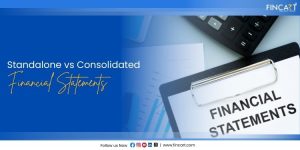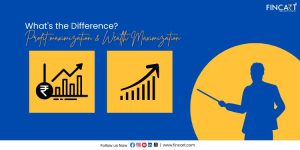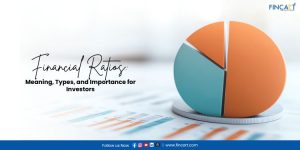Operating leverage and financial leverage are key concepts in financial management, reflecting how businesses manage costs and funding. Operating leverage focuses on the relationship between fixed and variable costs in operations, showcasing how changes in sales volume affect profitability. On the other hand, financial leverage examines the impact of debt on a company’s capital structure and its ability to amplify returns. Understanding these two levers is crucial for businesses to make informed decisions about cost management, risk, and achieving sustainable growth.
What is Financial Leverage
Every company needs funds to operate, grow, and succeed. Companies finance these funds primarily in two ways – The first is called equity financing, where companies use shareholders’ money. The second is called debt financing, where they borrow money to fund their activities. Debt financing is costly as companies have to pay interest on the money they borrow. Financial leverage specifically refers to the use of debt to finance a company’s activities. It measures how much a company uses borrowed money to finance its operations. If a company has high financial leverage, it means the company has high levels of debt, and thus it needs to generate more profits to cover that debt.
This metric also indicates how financially stable the company is. Debt can increase a company’s earnings and the earnings per share for its investors, but borrowing money also comes with interest. For example, let’s say a company decides to open a new plant. A new plant will lead to more output and thus more sales for the company. To finance this plant, the company decides to borrow money. The company’s goal now is to make sure that the profits earned are higher than the interest payments on the loan. If they do so, it will boost their overall earnings and benefit the shareholders. However, if the company’s revenue or profits go down, it still has to pay its debt. This is the risk associated with financial leverage. A company has to generate sufficient revenue to cover its interest payments and principal repayments, otherwise, it could lead to default, reputation damage, or even bankruptcy.
Essentially, financial leverage is only beneficial if returns from using the borrowed money are greater than the cost of the debt. The Degree of Financial Leverage (DFL) measures how changes in a company’s profit, such as EBIT (Earnings Before Interest and Taxes), affect its earnings per share (EPS). This factor is influenced by interest and the cost of debt. If costs are high, the DFL will also be high, meaning the company will be taking a higher level of risk, but when the returns on the borrowed capital exceed the cost of the debt, a high DFL is beneficial.
Also read: How to Create a Business Financial Planning?
What is Operating Leverage
A company has two types of costs – variable costs and fixed costs. Variable costs, as the name implies, are costs that change with the level of production. For example, as the production of a manufacturing company increases and they make more products, more raw materials and labour will be required. This means the overall costs will also increase. On the other hand, fixed costs stay constant regardless of production levels. Some examples of fixed costs are salaries, rent, interest, leases, essential maintenance, electricity and water bills, and more.
Operating leverage tells us about the structure of a company’s costs. It measures how much a company’s profits are affected by changes in sales, based on the mix of fixed and variable costs. Basically, it shows how a company’s fixed costs and variable costs impact its overall profitability when sales go up or down. Companies such as manufacturers need to maintain the plants and factories and generally use a lot of equipment for operating. These costs are fixed, that is, they do not change with the level of production. Whether the company produces a lot or a little, it still has to pay for maintaining the equipment and factories. On the other hand companies such as a law firm have lower fixed costs. Companies that have higher fixed costs compared to their variable costs are said to have high operating leverage.
Let’s understand operating leverage with the help of an example. Suppose a steel manufacturer has a majority of fixed costs like factory maintenance and equipment that stay the same no matter how much steel they produce. If this company increases its production, the extra sales will boost profits because the fixed costs remain the same. However, if production takes a hit, profits will also go down because the fixed costs stay the same.
Operating leverage is also used to evaluate a company’s break-even point, that is, the amount of sales needed to cover all fixed and variable costs. When the degree of operating leverage is higher, a company will need more sales to reach its breakeven point, as it has to cover more fixed costs before it starts to make a profit. In case the sales fall, there will be a smaller safety margin which would increase risk. That’s why companies prefer lower operating leverage, as it reduces risk.Leverage is a company’s ability to use new assets or borrowed money to increase profits or reduce expenses. Basically, leveraging allows companies to do more with less by helping them perform better and achieve higher returns than they would with their existing resources. To determine their financial health and performance, companies use two metrics – operating leverage and financial leverage. The main difference between operating and financial leverage is that operating leverage focuses on the impact a company’s fixed costs have on its profitability, whereas financial leverage deals with the influence of borrowed money on a company’s health. Let’s check out the difference between operating leverage and financial leverage in more detail, and understand how each affects a company’s success.
Looking for a Financial Advisor?
Connect with Fincart for personalized financial advisory services and achieve your financial goals with confidence.
Also read: 5 Tips to Leverage IPL Principles for Financial Success
Difference between Financial Leverage and Operating Leverage
Here’s a breakdown of the difference between operating and financial leverage:
| Financial Leverage | Operating Leverage |
| Financial leverage refers to a company’s ability to use debt financing to achieve better returns. | Operating leverage tells us about the ability of a company to use fixed costs to generate more profits. |
| Due to debt and interest obligations, financial leverage involves financial risk. | A company’s high fixed costs can affect its profitability, so operating leverage involves business risk. |
| Financial leverage focuses on the capital structure of a company. | Operating leverage focuses on the company’s fixed costs. |
| The Degree of Financial Leverage (DFL) is given by EBIT / EBT, where EBIT stands for Earnings Before Interest and Taxes and EBT stands for Earnings Before Taxes. | The Degree of Operating Leverage (DOL) is given by Contribution Margin / EBIT. Contribution margin means the difference between sales and variable costs. |
| The degree of financial leverage measures how changes in EBIT affect the company’s earnings per share. | The degree of operating leverage measures how changes in sales volume impact a company’s EBIT due to its use of fixed costs. |
| A higher degree of financial leverage means the financial risk for the company is also higher. | A higher degree of operating leverage also indicates a higher operating risk for the company. |
| If the ROCE (Return on Capital Employed) is high, the degree of financial leverage is preferred to be high, as the company is generating more profits than it is paying interests. | Generally, operating leverage is preferred at lower levels due to the associated business risk. |
| Since financial leverage involves the company’s debt and loans, it is related to the liability side of the company’s balance sheet. | Operating leverage is higher than the break-even point. |
| Changes in interest rates or the amount of debt taken affects a company’s financial leverage. For example, if interest rates go up, a company with a lot of debt will see a bigger increase in interest payments and thus generate lower profits. | Small changes in sales can cause big changes in the profits of a company with high operating leverage (high fixed costs). For example, if sales go up, profits go up a lot, but if sales go down, profits will drop sharply. |
Both types of leverage have a big impact on a company’s financial performance. The main difference between financial leverage vs operating leverage is that financial leverage affects how borrowed funds influence a company’s profits, whereas operating leverage affects how a company’s fixed costs influence its profits.




